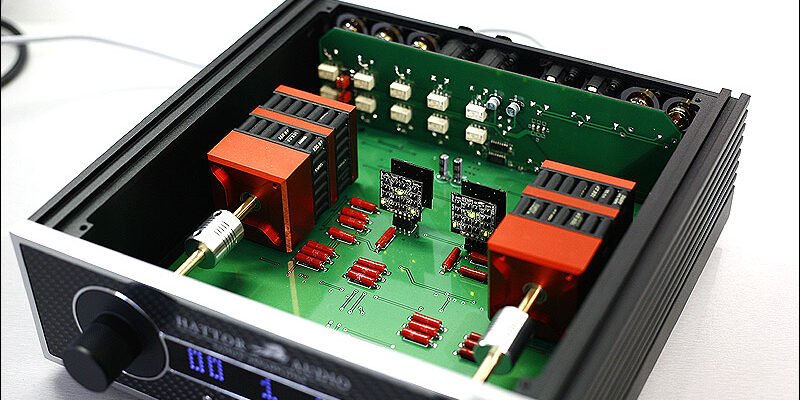A passive preamp, also known as a passive volume control or passive attenuator, is a simple yet effective audio device that adjusts the volume level without introducing active amplification or coloration to the audio signal. It is a minimalist approach to controlling audio levels in a system, and its sound characteristics can be described as transparent, unaltered, and faithful to the original source material. In this article, we will delve deeper into the workings of a passive preamp and explore how it affects the sound reproduction.
To understand the sound characteristics of a passive preamp, it is essential to first grasp its basic design and functionality. A passive preamp typically consists of a potentiometer (volume control) and basic input/output connectors. Unlike active preamps that incorporate active amplification stages to boost the signal, a passive preamp relies solely on passive components for volume adjustment. This means that it does not introduce additional gain or alter the tonal balance of the audio signal.
The primary purpose of a passive preamp is to attenuate (reduce) the signal level from the source and pass it on to the power amplifier or active speakers. By adjusting the potentiometer, the listener can control the volume level, but the signal itself remains unaltered. This minimalist approach allows the passive preamp to maintain the integrity of the original audio signal and preserve its characteristics.
One of the key advantages of a passive preamp is its transparency. Transparency refers to the ability of a device to faithfully reproduce the audio signal without adding any coloration or distortion. A well-designed passive preamp aims to have a negligible impact on the audio signal passing through it, allowing the listener to experience the music or sound as the artist intended. It does not impart its own sonic signature or alter the tonal balance, ensuring a clean and unadulterated audio reproduction.
In terms of sound quality, a passive preamp is known for its accuracy and detail retrieval. Since it does not introduce any additional gain stages or active circuitry, it does not add noise or distortion to the signal. This results in a cleaner and more transparent sound, where subtle details and nuances within the music or sound recordings can be heard with greater clarity. The absence of added coloration allows the listener to perceive the true characteristics of the source material, enabling a more engaging and immersive listening experience.
Furthermore, a passive preamp typically maintains a high level of channel separation, ensuring that the left and right audio channels remain distinct and well-defined. This helps to create a precise soundstage and imaging, where instruments and vocals are accurately placed within the stereo field. The spatial accuracy enhances the overall depth and realism of the audio reproduction.
In summary, a passive preamp’s sound characteristics can be described as transparent, unaltered, and faithful to the original source material. Its minimalist design and absence of active amplification stages allow it to maintain the integrity of the audio signal, providing a clean and accurate sound reproduction. With a passive preamp, listeners can enjoy an immersive and engaging audio experience, where details and nuances within the music or sound recordings are faithfully conveyed.



